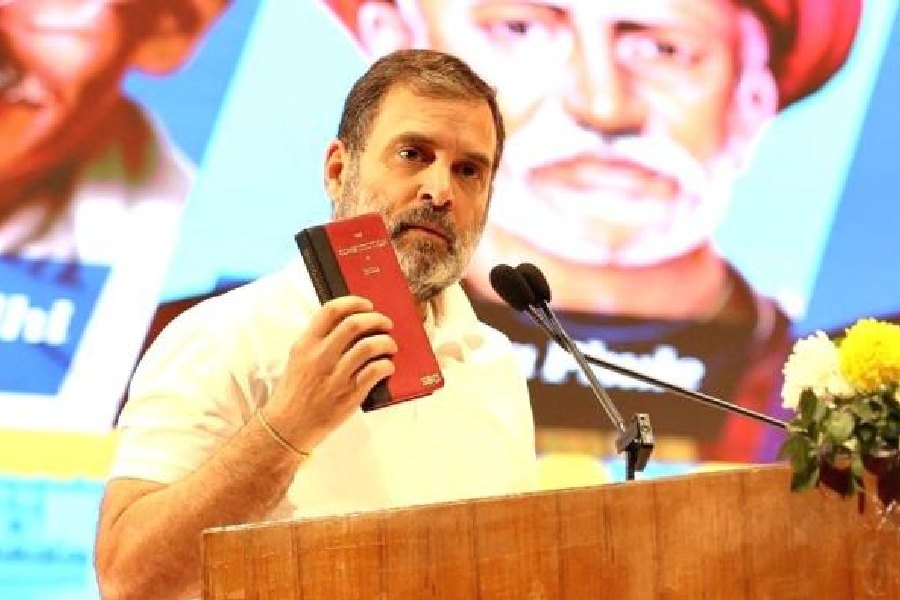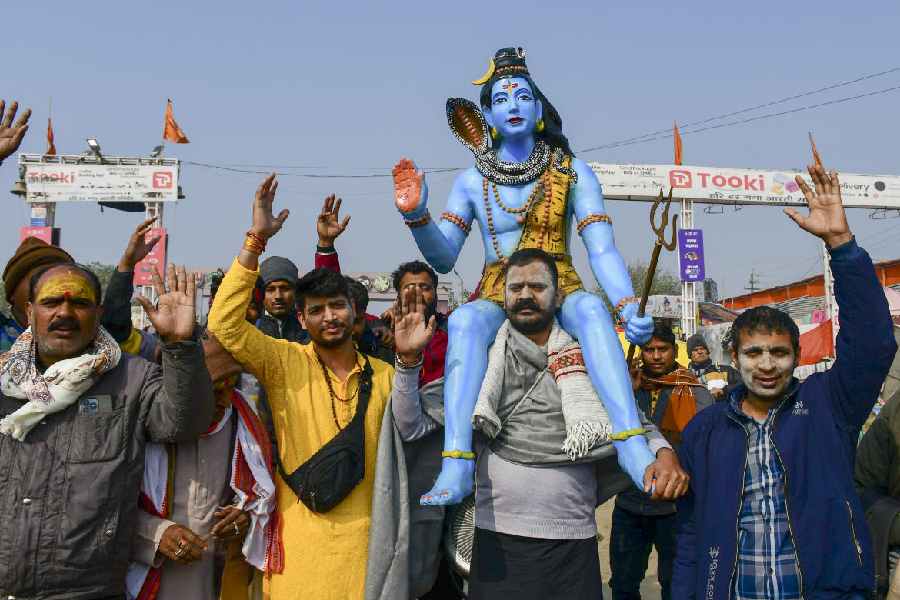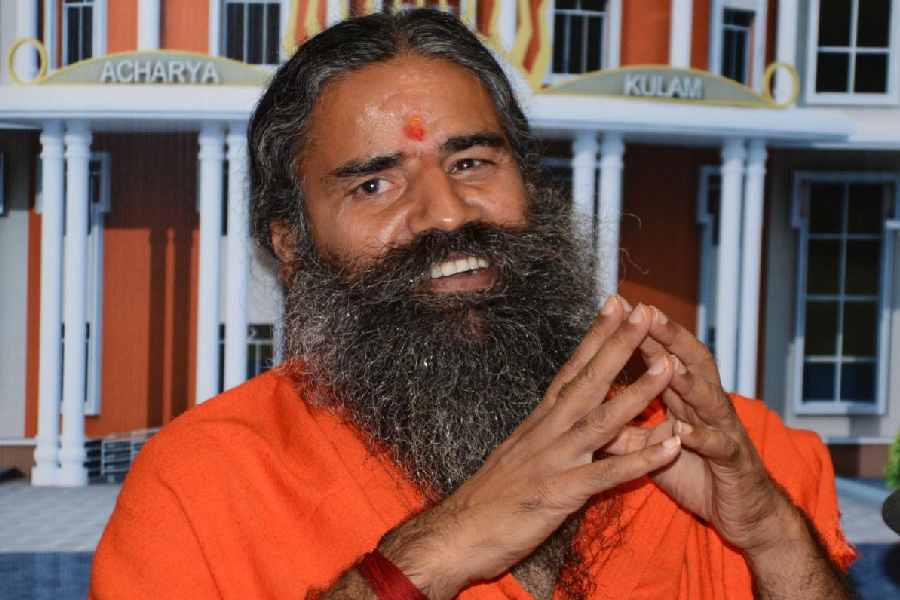 |
 |
 |
 |
 |
| (From top) Rahul Bose; a still from BBD; Buddhadeb Dasgupta; Goutam Ghose directs Nana Patekar in Yatra; and a scene from Kalpurush |
Is Tollywood fading out? Perhaps not. But it certainly isn’t flourishing. No wonder, Bengal’s film industry is looking west for help. On an average, 40 Bengali films are produced every year — and the figure has been stagnant for years. Bengali producers such as Joy B. Ganguly and Arindam Sil of Moxie Entertainment (P) Ltd complain that most Tollywood actors today neither have poster value nor star value. “Besides, they are busy doing tele-serials and jatra,” says national award winning filmmaker Buddhadeb Dasgupta. “That doesn’t happen in the Hindi film industry as the actors for soaps belong to a different league. Moreover, we don’t have great actors any more. So when you write a script, you can’t think of a Bengali actor who’d be able to do justice to a character. It’s become a nightmare,” Dasgupta adds.
So Tollywood’s adopting a radical solution — churning out Hindi and Bengali films, using talent brought in from Bollywood. Some think a Mumbai link gives a film “assured returns” with a “saleability factor,” at a time when Tollywood is in a state of transition.
The changes in Tollywood are sweeping. Efforts are on to give it a complete makeover. Fresh talent — handling camera, sets, costumes, sound and choreography — is being sought out. Budgets have shot up as producers are optimistic about recovering the amounts. And in the new-look Tollywood, producers and directors are wooing stars from Mumbai.
Director Goutam Ghose, who has earlier worked with Mumbai actors, has finished work on his new film Yatra, with Rekha and Nana Patekar. While SPS Arts and Entertainment has produced Yatra, Shree Venkatesh Films took the plunge with Rituparno Ghosh’s Raincoat, starring Aishwarya Rai and Ajay Devgan. Moxie Entertainment (P) Ltd is behind Anjan Dutt’s Hindi film BBD, starring Naseeruddin Shah, Kay Kay Menon, Jimmy Shergill, Sonali Kulkarni and Rituparna Sengupta.
Some stress the advantages of producing a Hindi film in Calcutta. “A Hindi film guarantees a national audience. Producing it in Bengal with a Calcutta-based director is a convenient arrangement,” says Shrikant Mohta of Shree Venkatesh Films. “Irrespective of whether the film is in Hindi or Bengali, the Bollywood actors taken on have to be known faces with a box office value,” Mohta stresses.
Bipin Kumar Vohra, who heads SPS Arts and Entertainment, endorses the point. The production house earmarked Rs 4 crore for Yatra, set for a May 4 release, and is happy with the end product. At present, it is toying with the idea of roping in a Hindi film director like David Dhawan or Anees Bazmee for its next Hindi venture. “We want to grow. The Hindi market is bigger, the actors are professional and deliver and the returns are high,” says Vohra. He agrees that it helps to have actors from Bollywood to build the market value of a film.
Not surprisingly, the budget for regional ventures — for a national or regional audience — has taken a quantum jump. The average budget is now anything between Rs 90 lakh and Rs 1 crore, as against an earlier average of Rs 10-20 lakh. Rituparno Ghosh’s Utsav cost Rs 20 lakh in 2001, while the budget for director Nabyendu Chatterjee’s Souda in 1997 was Rs 9 lakh.
Locations too have shifted to the US, London, Singapore, Bangkok and Dubai, and the end products are slick and technically sound — evoking enthusiasm in the industry. “The trend is a healthy one and will generate more opportunities,” holds actor Rituparna Sengupta, who is also working in several Hindi films. “It will also create more awareness about the quality of cinema from Bengal.”
Some Bollywood stars, in fact, are keen to work in a Bengali film. Saif Ali Khan, Anupam Kher and Sushmita Sen, says Dasgupta, are eager to work with him. “Even Sanjay Dutt met me on his last visit to the city,” he adds.
There is a fair amount of excitement in Bollywood, too, about the alliances with Tollywood. Jackie Shroff, who played a zamindar in Rituparno Ghosh’s Antarmahal, stresses that working in a Bengali film is a “beautiful” experience, even though he doesn’t speak the language. “Bengali films are sensitive. I understand the feelings,” he says. “The directors have a sensitive side to them. They treat you like a child, look after you and guide you,” says Shroff, who has also starred in a recent Bengali film, Raatporir Roopkatha, with Indrani Haldar.
Actress Sameera Reddy couldn’t agree more. Having worked in Dasgupta’s Kalpurush with Rahul Bose and Ami, Yasin Aar Aamar Madhubala with Prasenjit, Reddy is all praise for the way things move in Calcutta. Comparing the two film industries she says, “Bollywood is far more cut-throat, there is a certain sense of detachment among the unit members. But here, it’s just the opposite. It works like a family.”
To be sure, several filmmakers from Bengal have earlier tread Bollywood territory. Satyajit Ray and Mrinal Sen have been there, done that. Sen’s Hindi films had a Bengali sub-text — the scripts were mostly adaptations of stories by Bengali writers — but his actors ranged from Naseeruddin Shah and Om Puri to Shabana Azmi and Smita Patil. “All of them suited the roles they essayed but the task of the filmmaker and actors working in another language becomes easier if they develop respect for the circumstances in which the film is being made,” says Sen.
As the Bengali film industry ropes in Bollywood actors for both Bengali and Hindi films, it’s learning to cope with a new world. And Ghose, whose film stars Rekha in the role of a courtesan and Patekar as a writer, knows that there are ups and downs in merging two diverse domains. “Although we provided all possible comforts, initially Rekha had some difficulties adjusting to our ways, especially because I don’t pamper the stars on the sets,” recalls Ghose.
Other industry insiders cite more downs than ups. “Unfortunately none of these films (with Bollywood actors) is commercially successful, although they may win an award or two,” says Arijit Dutta, vice-president of the Eastern India Motion Pictures Association. Even the Amitabh Bachchan-starrer Ora Kara, which the superstar dubbed in his own voice, sank without a trace.
That’s why not all Tollywood directors are happy with the trend. “Bengal has no dearth of talent. Why increase costs by taking a Hindi film actor? If the script and narrative are good, a film is bound to do well,” says director Prabhat Roy. He should know — he roped in Naseeruddin Shah for his Bengali film Pratidan which was as much a hit as his Sheth Patharer Thala starring Tollywood actors.
Filmmaker Nabyendu Chatterjee too is among those highly critical of the development. “It’s important to take actors in terms of their suitability. Ultimately it’s the film as a composite unit that determines its fate at the box office.”
That also applies to Hindi films backed by Calcutta producers, says Anjan Dutt. He insists BBD couldn’t have been made in any other language or city “as it’s about people who don’t speak in Bengali but live in Calcutta.” Ghose on his part clarifies that his decision to make Yatra in Hindi wasn’t strictly governed by commerce. “The characters, story and setting demanded that it be made in Hindi,” he says.
The alliance evokes mixed emotions in actress Roopa Ganguly, though she admits it will throw up more opportunities for actors to prove themselves. “I do feel hurt at times, especially when I know that roles that I could have done are being played by Bollywood actors — like, say, Deepti Naval’s role in Yatra. But then I can justify the trend, too. Taking Bollywood actors in a regional production adds to its commercial value and the returns are secured. I have learned to accept I don’t have that commercial value.”
Tollywood’s future, clearly, depends on the financial well being of its Bollywood ventures. If the films with Bollywood casts bomb, as some hold they will, Ganguly may well be back with a bang.











